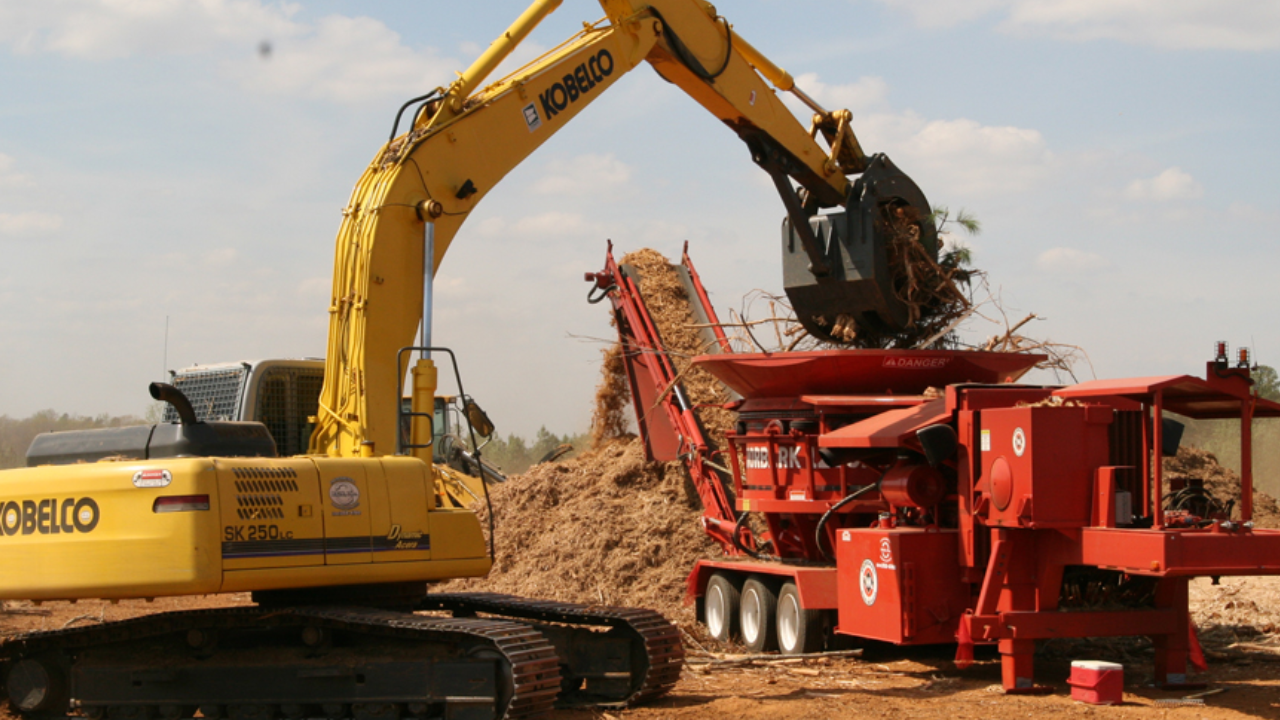Tub grinder teeth are critical components that influence the efficiency and efficacy of tub grinders in a variety of industries. Knowing the functions, types, and materials of these teeth is critical for operators and maintenance teams to maximize the equipment’s lifespan and assure peak performance.
Regular maintenance, prompt replacement, and good operational techniques are critical to establishing successful tub grinder operations and contributing to long-term waste management and resource utilization. Tub grinders have become indispensable in a range of industries, acting as powerful processing devices for organic materials and wood waste.
These machines rely heavily on tub grinder teeth. These teeth are required for crushing raw materials into more usable forms. Tub grinder teeth are the cutting elements in charge of grinding and chipping organic materials. Their principal role is to cut large, cumbersome materials into smaller, more homogeneous pieces.
What Is Tub Grinder Used For?
A tub grinder is a heavy-duty machine that grinds and processes vast amounts of organic materials such as wood waste, agricultural waste, and brush. It consists of a tub-shaped container with an inside spinning hammer mill or cutting mechanism. Tub grinders efficiently convert bulky materials into smaller, more manageable bits, making them useful for mulching, composting, and biomass generation.
Tips for Optimal Tub Grinder Teeth Performance
Tub grinders are powerful devices used in industries such as forestry, agriculture, and recycling to treat enormous amounts of organic material. The effectiveness and lifetime of these machines are greatly influenced by the performance of their primary components, particularly the grinder teeth. The following are important pointers for achieving optimal tub grinder tooth performance:
Choosing Appropriate Grinding Tools
It is critical to select the correct type of grinder teeth for the application. For the tub grinder to operate well, this is a crucial component. Material type, size, and moisture content are all important considerations. Different tooth shapes, for example, are better suited for grinding wood, green trash, or building debris.
Quality Materials Matter
When making grinder teeth, choose high-quality materials. Because of its remarkable hardness and wear resistance, tungsten carbide is a popular material. Investing in high-quality materials upfront can save money in the long run by lowering the frequency of replacements.
Proper Teeth Installation
It is critical to ensure that the grinder teeth are properly installed. Follow the manufacturer’s instructions to ensure optimum alignment and torque. Improperly placed teeth can cause uneven wear, lower efficiency, and probable grinder damage. Their main function is to break up big, heavy materials into smaller, more uniform pieces.
Regular Inspection and Maintenance
Establish a regular inspection program to detect symptoms of wear, damage, or dullness in the grinder teeth. Replace any worn or damaged teeth as soon as possible to prevent further degradation and to maintain constant grinding performance. To achieve even wear, rotate or rearrange your teeth regularly. This spreads the effort overall teeth, lengthening their total longevity.
Check Feed Rate and Grinder Speed
It is critical to use the tub grinder within the recommended speed and feed rate specifications. Overheating, increased wear, and decreased overall performance might result from excessive speed or uneven feed rates. Following the manufacturer’s instructions assures optimal functioning conditions. Sharp teeth are required for effective grinding.
Preventive Maintenance Program
Create a complete preventative maintenance program that includes routine inspections, lubrication, and wear part replacement. This proactive strategy reduces unplanned downtime, improves reliability, and extends the tub grinder’s lifespan. Instruct operators on the significance of proper feeding practices. Overloading the grinder might result in premature wear and increased maintenance requirements.
Invest In Advanced Monitoring Systems
Consider incorporating modern monitoring systems into the tub grinder to track critical performance variables. These systems can give real-time data on elements such as temperature, vibration, and wear levels, allowing for early interventions and preventive maintenance. Consistent and controlled feeding provides peak performance.
Summary
Optimizing the performance of tub grinder teeth necessitates a comprehensive approach that includes careful selection, high-quality materials, proper installation, frequent maintenance, and adherence to operational rules. Operators may maximize efficiency, decrease operational costs, and extend the life of their tub grinders by following these suggestions, thereby leading to higher productivity and profitability in a variety of industrial applications.

